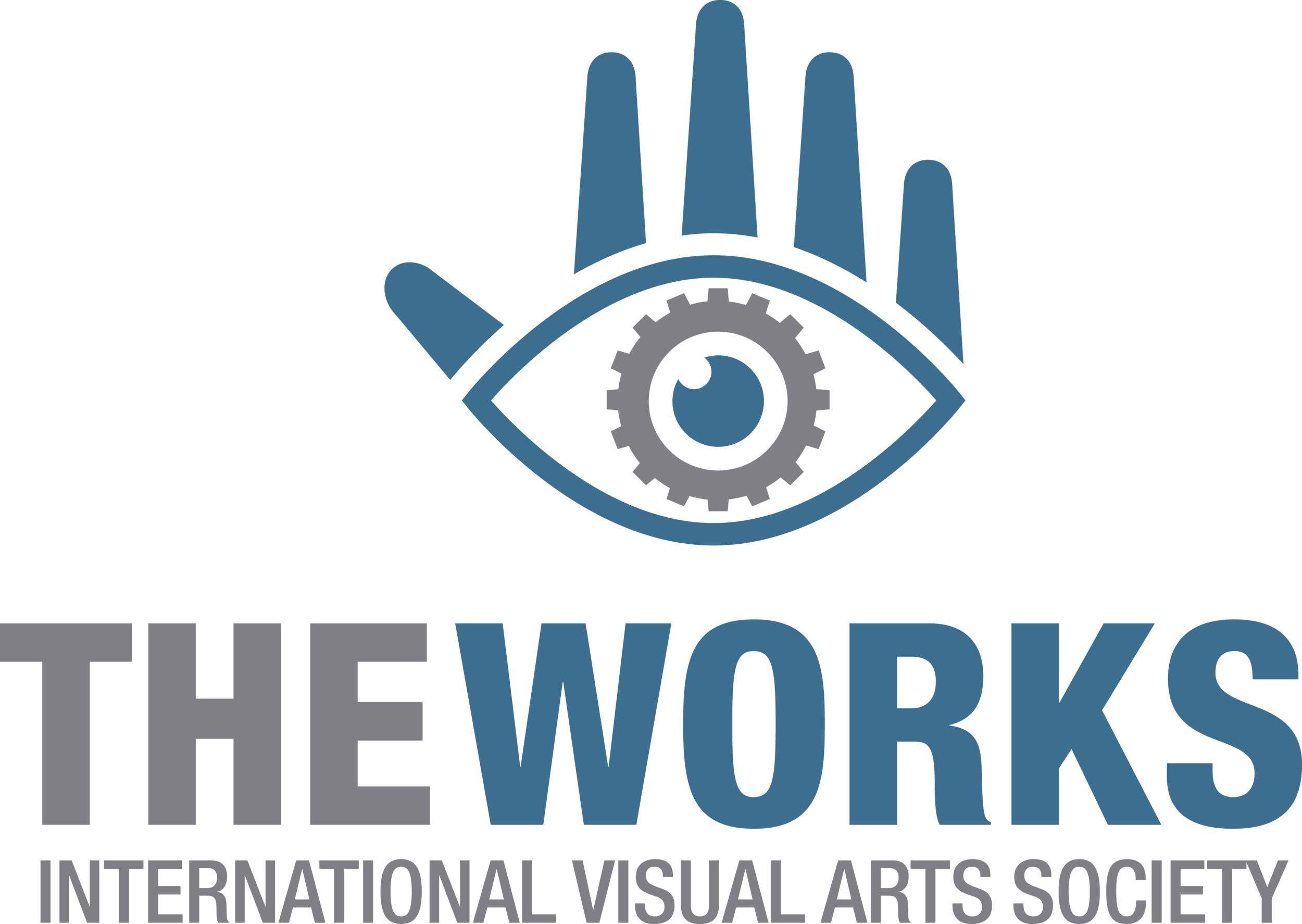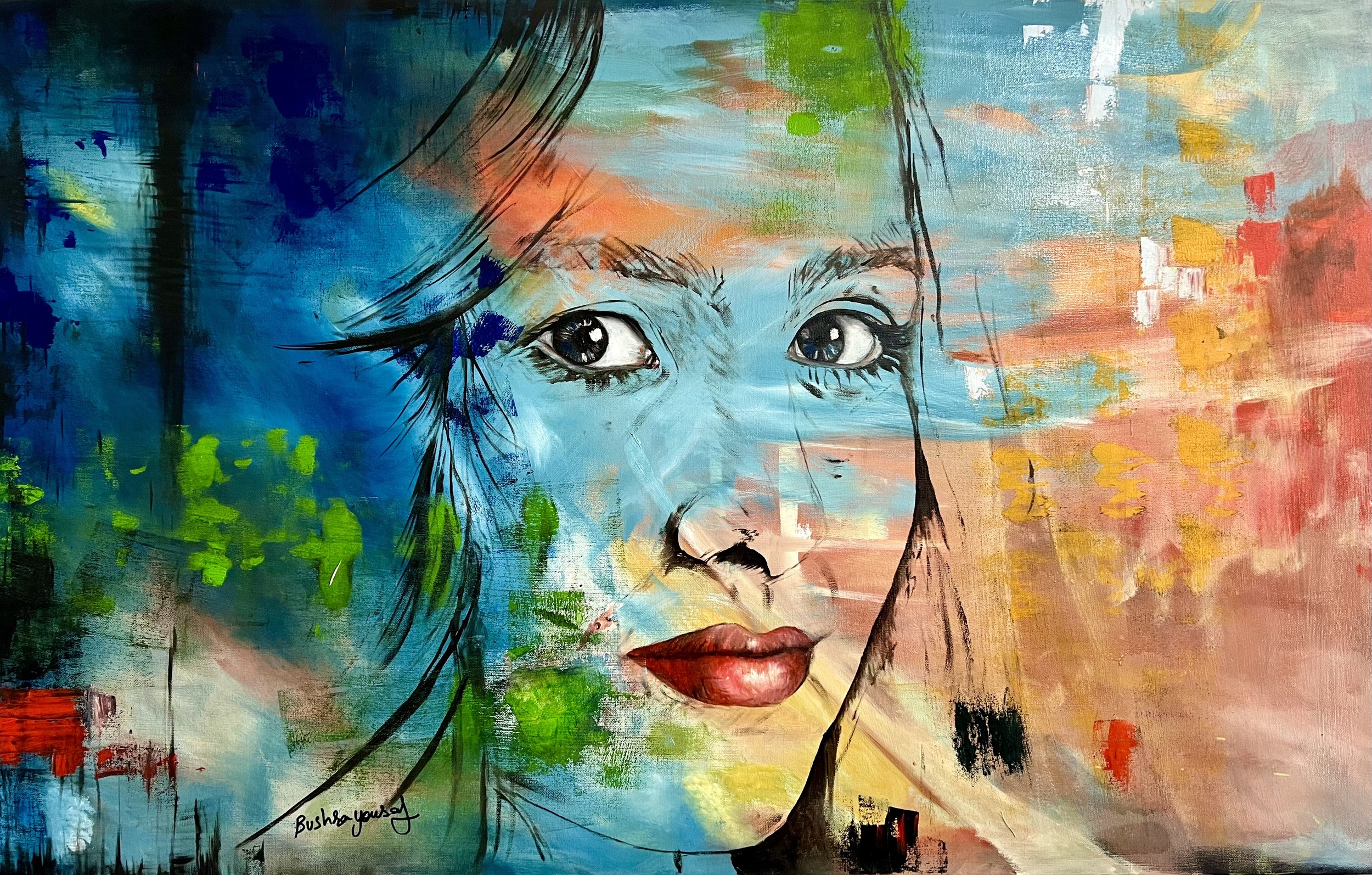Erika Germain, Detail of What Could This Ever Mean to You, Oil on canvas, 2021, 5’ x 5’. Don Wheaton Family YMCA, Edmonton AB. Photograph by Au7umn.
Upon initial viewing, what may strike people about Erika Germain’s Collected Translations is the expansive plethora of colours, lines, and objects that inhabit the coloured canvas of each work, which lack any conventional visual cues or signposts to guide people’s interpretations of them. Instead, these works encourage people to approach them without preconceptions and to arrive at their own understandings about what they mean and how the images within each work relate to each other. Prompting reflection, these works encourage open-ended articulations of meaning and points of significance that resonate with viewers.
Erika Germain, Detail of Ever-Patterned Collapsing Grid, Oil on canvas, 2021, 6’ x 18’. Don Wheaton Family YMCA, Edmonton AB. Photograph by Au7umn.
Different layers of meaning emerge from Germain’s works, depending on whether each work is considered as one part of the entire series, as an individual entity with its own meanings, or as a collection of individual objects that occupy the same physical space. The largest work in this exhibit is Ever-Patterned Collapsing Grid, a triptych consisting of three separate canvases that can be observed separately and together as a whole. Its sheer enormity prevents one from viewing the whole work unless one were to step farther back; yet, doing so will cause the work’s finer details to become less distinct and meld into the background. Closer inspection of specific areas within this painting, and others in this series, facilitates the emergence of new meanings among the shapes, lines, and colours when they are viewed in relation to each other.
Erika Germain, Ever-Patterned Collapsing Grid, Oil on canvas, 2021, 6’ x 18’. Don Wheaton Family YMCA, Edmonton AB. Photograph by Au7umn.
The title of this series, Collected Translations, gestures towards the themes that Germain engages with. She is interested in exploring how art can function as a form of visual translation and representation—evoking and embodying language in ways that extend beyond the confines of words, nurture new narratives of meaning, and open pathways for social connection. Indeed, language can be regarded as a context-specific system of codified signs that become meaningful for people who subscribe to it and the shared sense of reality that it constructs. Drawing upon textual sources for their inspiration, the “collected translations” in Germain’s works reimagine these in a visual manner and suggest possibilities for people to establish shared understandings and modes of connection, whereby the images themselves become a basis for language. Although the act of translation may result in some loss or gap of understanding, it also opens possibilities for new meanings to emerge.







